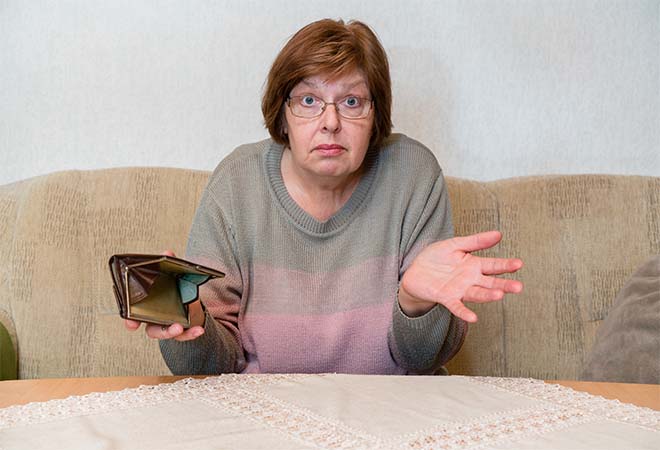Retirement was supposed to be a time to relax and enjoy the fruits of your hard work during your life.
It’s a scary fact but women in Australia are currently retiring with 47% less superannuation than Australian men. Yet we live five years longer than men on average. And almost half of older single retired women end up living in poverty and economic insecurity in their retirement. Those that still have a mortgage in their retirement years or no homeownership are even worse off.
Women that are still working but in multiple casual jobs miss out on superannuation contributions as they do not meet the requirement to earn $450 per month gross earnings from one employer. Quite often they are juggling mothering with work, fitting in around family and school hours making a full-time position not viable. However, with 50% of marriages ending in divorce, it’s these sacrifices or life events that women have made that penalises them in retirement.
Even during working years, a woman is underpaid by an average of 14% than men in the same role. The average woman’s superannuation is therefore around 42% lower than those for men.
Research shows that the gender gap is at its greatest for women aged between their late 30s and mid-40s, the analysis of the account balances of 4 million members of five large industry superannuation funds. For the women, that is usually when they are providing the bulk of unpaid childcare and more likely to be working part-time and on lower salaries. Not all women gain a salary increase as they age compared with men.
If the woman has to take time out to care for elderly parents or is faced with a divorce in mid-life, then her ability to save for superannuation has diminished even further. Even though super balances of divorcing couples are usually split, women with children still have approx. 37% less super than divorced men of similar age and socio-economic backgrounds. Men can usually financially recover from divorce within 3 years whereas a woman will take 7-10 years to financially recover.
Single women on lower incomes are most at risk of struggling financially at the end of their careers. Then if they are renting or don’t fully own their home, then they are increasingly heading into homelessness and poverty for which the superannuation system is doing very little to support these women.
Our workplaces have changed quite dramatically since Superannuation was introduced in 1992 however, the system has not kept up with the pace of modern society and the modern workplace. It was designed around men working full-time and being the principal breadwinner however, today we see a very different community.
Women are having nightmares about funding their retirement. With nearly half of women facing retirement having less than $50,000 in their super funds, it is understandable.
Superannuation was sold as being about choice and the ability to self-fund your retirement for a better life to take the pressures of the pension fund for Government. But women’s superannuation balances are also determined by relationships and gender inequality in family care including elderly or disabled family members and the division of household income.
How can women beat the odds with their Super?
 Where is your super?
Where is your super?
Women often lack the confidence to tackle their retirement planning but there are quite a few strategies for women at different ages and stages of their lives to improve their financial standing for retirement.
If you have had a series of jobs over the years, chances are you’ve left a trail of super accounts. By consolidating your super by rolling all your super into one fund, you could save in fees and have more money working for you.
Mid-life crisis is not just about what you have not yet achieved, but also your need to pay attention to building up your super fund to boost your retirement savings.
Adding a little extra
Could you speak to your employer and direct some of your pre-tax salary into super? This is called Salary Sacrifice and the contributions are taxed at the concessional super rate of 15% (or 30% if you earn over $250,000) instead of your marginal tax rate. Then when you finally retire, you can withdraw your money tax-free. It’s a very tax-effective way to boost retirement savings.
If you earn less than $52,697 a year, then making a personal (after-tax) contribution of $500 to your super account, the Government will throw in a further $500 – a sweet gift and incentive if you need to boost your super. The limit on this is $1,000 each per year. This is possibly the only legal way you will ever earn a guaranteed 50% return on your money.
If you are nearing retirement and want enough money to enjoy your senior years, then your super fund may need an injection of funds in your final few years of working. That is assuming the children have left home! This is easier also if your home is paid off and you have some disposable income.
How about a later-in-life super contribution?
A final super fund blitz may be to consider downsizing your family home and put some of the money into your super fund. If you are 65 or older and you have lived in the home for 10 years or longer you may be able to make a downsizer contribution to your super of up to $300,000 from the proceeds of selling your home. Couples could contribute up to $600,000. However, it will count towards your eligibility for the Age Pension.
Whilst you can see the current superannuation and retirement systems disadvantage women, there are still ways to boost your retirement savings.
START NOW!
Starting sooner the better off you’ll be.
Why settle for a mediocre retirement when you could enjoy all the fruits of your hard labour during life?

Philippa Hunt is a Woman on a Mission.
WiseGirls Money Academy was created after working as a qualified Financial Adviser for many years and deciding it was time to assist women who desired to learn and develop the self-empowerment to understand their emotional relationship with money, the skills and knowledge to save and invest. They wanted to learn how to create their own financial future and become financially capable.
The WiseGirls Money Mission is to provide the opportunity and place for growth and development of women of all ages in personal and financial skills in a supported female environment so that they take control of their future to reach their own financial independence.


